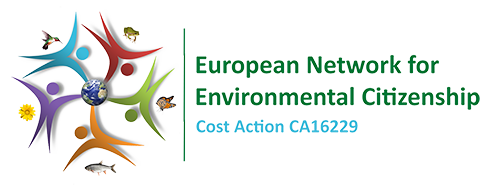Search Results Resources
You have searched in Resources with the following criteria: << Go Back
The search returned 56 results.
Pedro Reis
- From
- 6
- To
- 25+
Let’s save the bees! An environmental activism initiative in elementary school.
English
Portugal
Science education research emphasizes the need to engage students in socio-scientific issues, empowering them to act in a substantiated manner. This study aims to understand the potential of a collective action initiative, focused on the decreasing honey production issue, and on the students’ empowerment for action. A qualitative research methodology was used with an interpretative stance. The participants were 26 3rd grade students and their teacher. Data was collected from the students written documents, and through an interview with the teacher. Results show that students’ engagement in collective action focused on the decreasing honey production issue, required them to mobilize their scientific knowledge to support their actions, as well as the development of several other competences. Students also became aware of the importance, for every citizen, to substantiate their knowledge in order to act, that acting is crucial to overcome issues that may persist and impact future generations, and that only by engaging in action can change take place. Another highlight was the students’ strong engagement in collective action, allowing them to raise awareness this issue in their local community.
Erkan Cermik
- From
- 12
- To
- 16
Developing Environmental Citizenship Knowledge Test and Determining the Knowledge Levels of Secondary School Students
Turkish
Turkey
In this study, a theoretical, valid and reliable knowledge test was developed to measure the knowledge dimension of environmental citizenship in secondary school students. In addition, environmental knowledge levels of secondary school students were examined. The data were collected from a total of 255 secondary school students studying in the seventh and eighth grade1 . Within the framework of environmental citizenship, a multiple-choice knowledge test consisting of 45 items was prepared in accordance with Bloom's taxonomy considering the secondary school environmental curriculum standards. As a result of the item and test statistics using the Classical Test Theory, items with item difficulty and item discrimination indexes at the desired level were selected. Content validity was taken into consideration in the selection of the item. As a result of the analysis, Environmental Citizenship Knowledge Test consisting of 25 items with average difficulty value of 0.54 and average discrimination value of 0.57 was obtained. The internal reliability coefficient of the test (KR20) was determined to be 0.85. Findings showed that secondary school students' level of knowledge about the dissolution time of different substances in nature is low. The sub-dimension, where the students have the highest level of knowledge, is the Mindful Consumption-Conscious Consumer sub-dimension. However, it has been observed that knowledge levels on global warming and greenhouse effect are lower than other subdimensions. The fact that the lowest level of knowledge is the behavior towards environmental protection emphasizes the importance of environmental citizenship education. The test developed in the study is a valid and reliable scale to measure the knowledge dimension of environmental citizenship levels of secondary school students.
Andreas Ch. Hadjichambis
- From
- 6
- To
- 18
Recycling, 5R: Sustainable Consumption
Greek
Cyprus
- Knowledge
- Skills
- Competencies
- Values
- Attitudes
- Behaviours
- Social Aspects of Environmental Citizenship
- Individual actions
- Actions in Private sphere
- Actions in Public sphere
- Actions in Local scale
- Actions in National scale
- Actions in Global scale
- Preventing new environmental problems
- Solving environmental problems
- Addressing structural causes of environmental problems
- Achieving critical & active engagement and civic participation
- Practising environmental rights & duties
- Achieving sustainability
- Planning Actions
- Sustain Environmental and Social Change
This daylong program includes the participation in a sequence of activities that give emphasis both on theoretical and practical aspects and it is based on the methodology of decision making. It is organized in a way that supports the understanding of environmental concepts and through a hooking mission introduces students in issues related with the recycling and the sustainable consumption. 1. Mission. Students’ mission is to visit the mini-shop that has been set up at our Environmental Center, especially for the needs of this program, in order to buy the products they need for preparing a pic-nic. However; before their visit at our mini-shop students are asked to participate in a sequence of activities in order to complete a mysterious circular diagram which will reveal to them a “Green Code”, necessary for their shopping. 2. Studying the products and the raw materials. Students learn that for the production of several products different raw materials are used coming from several natural ecosystems. 3. Reuse. Students develop their crearivity and imagination as they seek and discover different constructions and ways to use of an item. 4. Recycle. Students study and sort out rubbish and waste at the recycle bins. In addition, the learn about the process of recycling through a more experiential way – by making recycled paper. 5. Refuse. In this activity students learn to reject the purchase of a product if the material from which is constructed in not environmental-friendly. 6. Reduce. Students study several packages as well the amount of rubbish resulting from these and thus they realize the need to find alternatives through which will reduce the volume of garbage. 7. Green Code. At this point, students are ready to complete the mysterious circular diagram, prioritizing first the 4Rs. 8. Eco-shopping . Having in their hands the circular diagram with the green code, students visit the mini-shop, they make decisions, they shop ecologically and they prepare for their pic-nic.
